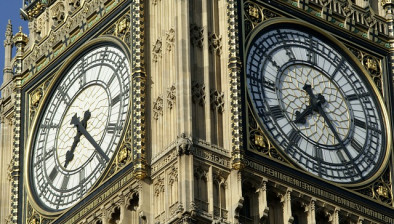NI High Court: Investigation report into 1971 bombing quashed due to investigative bias

Northern Ireland’s High Court recently quashed a 2014 report into a Belfast bombing where the findings of the report inaccurately detailed potential investigative bias.

About this case:
- Citation:[2022] NIQB 49
- Judgment:
- Court:NI High Court
- Judge:Mr Justice Michael Humphreys
The court rejected an argument that the report, produced by the Historical Enquiries Team (HET), could instead be edited.
Background
On 4 December 1971, loyalist paramilitaries planted a bomb at McGurk’s Bar in North Queen Street, Belfast, which detonated and killed 15 people and injured many more.
It was one of the bloodiest attacks in the history of the conflict in Northern Ireland. The target was selected “simply because it was a public house frequented by Catholics”.
The applicant’s mother, Kathleen Irvine, was one of the victims. The bombing has been the subject of several investigations over the last 50 years. The initial investigation by the RUC led to one man, Robert Campbell, being convicted.
However, a number of agencies criticised the police investigation as being unduly and wrongly influenced by the theory that the attack was the work of republican paramilitaries. It was said that this misconception infected the investigative process for several years.
This judicial review related to the HET report into the bombing, which was published in May 2014. The applicant sought to quash the report, as its finding were that there was no “investigative bias” on the part of the RUC.
The applicant claimed that this conclusion was irrational and contrary to the weight of the evidence. The respondent effectively conceded that the findings were irrational, but sought to only quash the specific portions of the report relating to investigative bias, rather than the entire report itself.
The Ombudsman’s report
In February 2011 the Office of the Police Ombudsman (PONI) published its report on the bombing. Its findings included that the police interpreted evidence as indicating that the IRA had been responsible for the bombing.
Police failed to give adequate consideration to involvement by loyalist paramilitaries, and this had the effect of undermining the investigation. Their ultimate finding, of investigative bias, was rejected by the Chief Constable of the PSNI.
Having closely examined the quality of the evidence underpinning the PONI findings, the HET believed that this assessment remained valid.
Response to the report
In 2016, it was averred that the then Chief Constable had decided “not to contest the issue of investigative bias”, although he was not conceding any of the grounds of the judicial review challenge. The motivation behind this concession was a desire to avoid any further distress to the families.
The respondent attempted to negotiate the necessary and appropriate excisions from the HET report. The applicant rejected this approach, stating that the entire report should be quashed.
The report itself was 160 pages long and contained many findings unrelated to investigative bias. Therefore, it was argued that the entire report should not be quashed.
Further, the HET has been replaced with the Legacy Investigation Branch (LIB), which has a workload of well over 1,000 cases, so any new investigation would have a considerable delay.
Remedy
The court noted that the remedies available to the parties were discretionary, per Section 18 of the Judicature (NI) Act 1978. The question before them was whether to quash the report in full, or to merely remove the offending paragraphs.
They noted that the findings of the HET report in relation to investigative bias were “wholly ill-founded, unsustainable and illogical. It is rare for a public authority to admit that it has behaved irrationally”.
In assessing remedies, the court noted characteristics of the report itself, such as:
- It purported to be a final and comprehensive report;
- It was a response to the PONI report;
- The families had specifically asked the HET to address the question of investigative bias;
- The report purported to arrive at definitive conclusions on this issue.
If the court simply removed the sections discussing investigative bias, it would no longer represent a final and comprehensive report, since there would be no findings on the issue of bias.
Further, there would be no conclusions at all on the issue of bias, despite the fact that the families asked for it. It would also not comply with its stated objective, to respond to the findings of PONI.
To overcome these shortcomings, the respondent proposed, in addition to the excisions, that a prologue be added to the HET report in the following terms:
“In the course of judicial review proceedings in respect of the HET conclusions on the issue of investigative bias, […] the PSNI confirmed that it fully accepts the Police Ombudsman’s report into the RUC investigation into the bombing, including the finding relating to investigative bias.”
The court noted that this approach also did not cure the above problems. It did nothing to analyse or reach findings about the alleged investigative bias. It, too, did not fulfil the obligation assumed by the HET to address the question of bias as part of its report.
The court found that this approach “represented convenient airbrushing rather than unequivocal reflection”.
Conclusion
Having carefully considered the competing positions, the court concluded that the proportionate remedy was to quash the HET report in its entirety.
The findings in relation to investigative bias were “infected by irrationality” and it was not possible to remedy the legal wrong by mere excision. To do so would cause the HET report to fail to meet its stated objectives and, in particular, render it incapable of addressing a key issue as far as the applicant and the families of the victims were concerned.
The applicant’s claim therefore succeeded, and the court made an order of certiorari in relation to the HET report.








